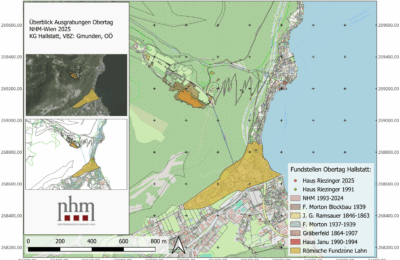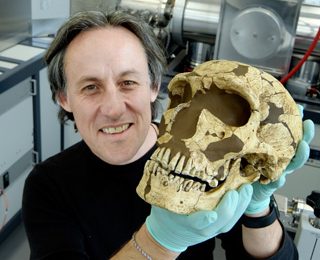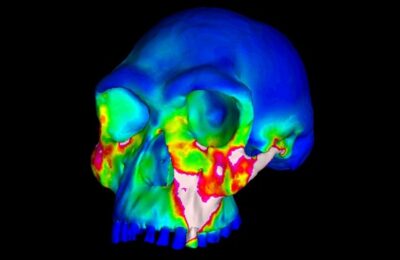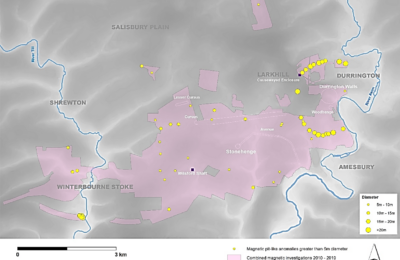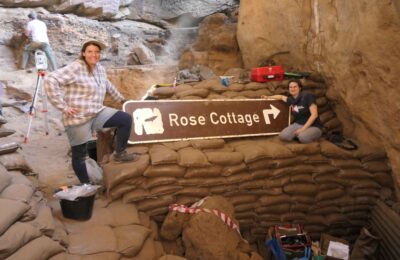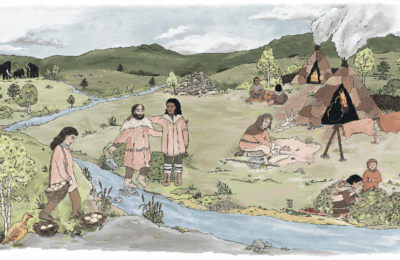7,500 years old – Neolithic finds rewrite Hallstatt’s history Archaeologists of the NHM Vienna discover earlier traces of settlements of early farming communities and present them to the public for the first time on 12 August 2025
During excavation work in Hallstatt (on the property of the Kocsar-Riezinger family in the Seestraße), archaeological layers of scientific importance were uncovered: Medieval terracing walls, a burnt layer with coins, bricks and fragments of vessels of the Roman period, as well as up to one meter thick layers from the Latène period (Late Iron Age, c 450-15 BC). Around 1,000 artefacts from different epochs have recently been recovered. The archaeologists of the NHM Vienna also identified spectacular finds pointing to older epochs: Neolithic fragments of stone tools for wood working, flint blades, animal bones and ceramics emerged under a prehistoric rock fall – about 7,500 years old. These are the oldest known traces in Hallstatt and its surrounding areas to date, which prove that the place was inhabited much earlier than previously thought. The earliest farming communities with settled lifestyles, praciting agriculture and animal domestication first appeared in Central Europe from 5,600 BC onwards. This is the first time that we have evidence that those communities, coming across rivers such as the Danube and Traun, also reached areas deep into the region of Salzkammergut and even to the Apls. The reason for this was presumably the salt deposits. On Tuesday, 12 August 2025, the NHM Vienna, together with the Museum Hallstatt, the municipality Hallstatt and the UNESCO World Heritage Management…
